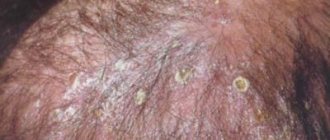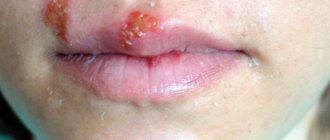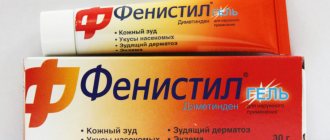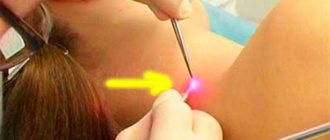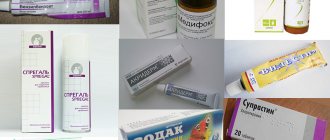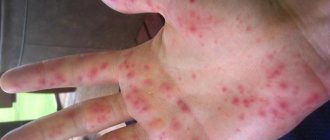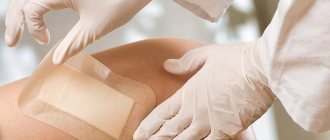What is the most effective way to treat sores in the nose?
It is difficult to find a person who is unfamiliar with pain in the nose. The question of how to treat sores in the nose was asked by almost everyone, and most often in the cold season. Nasal “wounds” can become a real disaster when tedious constant pain and itching accompany a person everywhere.
There are many types of pain in the nasal cavity, which are caused by a variety of reasons. The problem of treating nasal sores can be solved only after determining the type of pathology and its etiology. Most often, they do not pose any danger other than psychological impact and discomfort. But sometimes nasal sores are a symptom of a disease that can cause complications. You cannot risk your health - any pain syndromes must be treated.
Types of nasal sores
Sores in the nose can have different appearance, character, causes of formation and signs of manifestation. The most characteristic diseases and phenomena can be identified.
Rhinitis. Rhinitis, which is the most common cause of pain in the nose, is an inflammation of the nasal mucosa, accompanied by tissue swelling. The main symptom of the disease is a runny nose, the constant manifestation of which leads to the occurrence of various types of sores. Rhinitis has several varieties: infectious, allergic, hypertrophic, atrophic types.
The manifestations are especially noticeable in atrophic rhinitis, when the mucous membrane dries out and painful cracks appear. With increased dryness of the mucous membrane, frequent damage to blood vessels is observed, resulting in sores. The most typical manifestation is cracks at the tip of the nose, when the slightest hand pressure damages new vessels with the formation of new defects.
Sinusitis. Serious sores in the nose are caused by sinusitis, which is an infectious inflammation of the paranasal sinuses. Causes of sinusitis: viruses and bacteria. The following main forms of the disease are distinguished: sinusitis (inflammation of the maxillary sinus), frontal sinusitis (frontal sinus), ethmoiditis (inflammation in the cells of the ethmoid bone), sphenoiditis (sphenoid sinus). The disease occurs with a severe runny nose, fever, difficulty breathing, sneezing, severe pain, purulent discharge and accumulation of purulent mass in the paranasal sinuses. At the beginning of the disease, the nose hurts, and gradually the pain moves to the head area.
Herpes. Herpes is an infectious disease characterized by a rash of blisters on the skin or mucous layer. The pathology usually affects the inner surface of the nasal wing and rarely the tip. Bubble formations in the nose have the character of growths covered with a layer of mucous tissue. The rash also appears in the area adjacent to the nose. Herpes manifestations most often go away on their own, but to speed up the process, it is recommended to use ointments: tetracycline or zinc. The main symptoms of the disease: blisters in the form of a rash with a transparent filling and an inflamed base, itching, burning of the skin.
Cracks in the vestibule of the nose. Cracks can form in the area of the nasal vestibule and are caused by a chronic inflammatory disease. The damage is caused by maceration of the nostril skin, leading to disruption of the integrity of all skin layers. The destructive process is explained by the influence of microbiota, fed by secretions from the nasal cavity in the form of a runny nose. If pathogenic microorganisms are attached, boils, carbuncles, etc. may appear.
Crusts in the nasal cavity. A crust in the nose is formed as a result of atrophy of the mucous membrane and bone tissue, which leads to the accumulation of a characteristic secretory substance. These accumulations gradually harden, turn into growths, acquire an unpleasant odor and create interference in the nasal canal. As a result of the process, specific symptoms appear: difficulty breathing, unpleasant odor, loss of smell. Upon examination, yellow-green or brown crusts can be distinguished in both nasal sinuses, which can cover almost the entire surface of the mucous membrane.
Other manifestations
Nasal “wraps” have many different types and conditions of occurrence, among which the following stand out:
- Uncontrolled use of medicinal drugs leads to dryness of the mucous membrane, the appearance of cracks and atrophic rhinitis.
- Injuries and mechanical impacts lead to various types of damage: cracks, scratches, etc. which, when an infection occurs, become a source of inflammation.
- Nasal sores in children, such as furunculosis, streptoderma. The first is the appearance of boils as a result of dirt getting into the mucous membrane. The main localization is the tip and wings, the septum and the area under the nose. Streptoderma is an infectious lesion of the mucous membrane, blisters with cloudy liquid appear.
- Sycosis of the nostrils: inflammation of the hair follicles of a purulent nature.
- Eczema: damage to the entrance to the nasal cavity as a result of a runny nose or allergies.
Remedies for the treatment of sores
In order to cure sores in the nasal cavity, it is necessary to determine the type of pathology and its causes. Therapy involves the fight against inflammation and pathogens, as well as the restoration of mucous membranes and tissue cells.
The following medications are used to treat herpes:
- Acyclovir: ointment, tablets, injections. Has an antiviral effect.
- Valacyclovir: ointment, tablets. Has increased biological activity.
- Famciclovir, Penciclovir: tablets. High antiviral effectiveness.
- Docosanol solution;
- Tromantadine (external use).
Treatment of sinusitis is carried out using symptomatic therapy and antimicrobial drugs.
For symptomatic treatment, analgesics, local vasoconstrictors (Oxymetazoline), antiseptic rinsing solutions (Furacilin, sodium hypochlorite), ipratropium bromide are prescribed. Drug therapy includes topical steroids, decongestants, mucolytics, and intranasal sprays.
Levofloxacin, Amoxicillin, Clindamycin, Cefaclor are used as antibiotics.
Treatment of crusts in the nose
One of the ways to treat crusts is to eliminate dry mucous membranes. For this purpose, physiotherapy methods are used: washing with mineral solutions, organotherapy to activate lymph movement, iontophoresis. Medicinal ointments, sprays and drops are widely used. Fleming's ointments, Traumeel, Spasatel, and solutions based on sea salt work well to eliminate dryness and restore the mucous membrane. The restorative effect is achieved with the help of ointments and gels Marimer, Aqua Maris, Otrivin more, Physiomer, Salin, Humer, Pantestin.
Treatment for cracked nose
When healing cracks, antiseptic ointments and other external agents that restore tissue are used. In addition, the following measures are recommended: increased fluid intake, stopping taking medications that cause dry mucous membranes, taking vitamin E, using steam inhalation with a solution of pharmaceutical chamomile and calendula, rinsing with Aqua Maris solution, etc. up to 4 times a day, maintaining a humidified indoor environment.
As for external remedies, positive results are achieved by using sea buckthorn oil and tea tree or rosehip oil, Vaseline, Vitaon.
Effective treatment of nasal sores of various types is provided by ointments on various bases. The most common are: Vishnevsky and Fleming ointment, oxolinic and ichthyol ointment. A few more ointments can be recommended:
- Doctor Mom: helps with a runny nose, relieves inflammation, has a restorative effect.
- Viferon: is especially effective in the early stages of the manifestation of sores.
- Evamenol: pain relief and restoration of the mucous membrane.
- Levomekol: based on methyluracil and chloramphenicol. It has an antimicrobial effect, anti-inflammatory and restorative effect.
- Folk remedy: a mixture of vegetable oil, beeswax and egg yolk.
- Folk remedy: ointment made from garlic (100 g) and olive oil (100 ml).
How to distinguish a cold from an allergic runny nose
Probably everyone has encountered this terrible condition when the nose starts running, the eyes turn red, and you want to constantly sneeze. Sometimes it is not immediately clear whether it is an acute respiratory viral infection or an allergic reaction.
Difference between cold and allergy
What's the difference:
- Manifestation of symptoms. Both types of rhinitis have the following symptoms: nasal congestion, constant discharge from the mucous membrane, redness of the eyes, fatigue and headaches. However, with viral rhinitis, the symptoms appear strictly one after another - first fatigue, then discharge, etc. And with allergic hay fever, the symptoms appear simultaneously.
- Duration of symptoms. A viral runny nose usually lasts 7–10 days. Seasonal rhinitis lasts as long as there is contact with the allergen, that is, for an unlimited period.
- Mucus secretion. During rotavirus disease, the discharge (colloquially snot) becomes yellow-green in color after a few days, which indicates the development of infection. With hay fever, the mucus is usually clear and thin.
- Sneeze. With colds, rhinitis occurs only at the initial stage. The reaction is a characteristic symptom of hay fever, especially if it is repeated several times in a row.
- Period of manifestation per year. Viral rhinitis is more often recorded in the winter months: from November to March. Allergic swelling of the nasal mucosa - in the spring during the pollination period.
- Presence of elevated temperature. Rotavirus may be accompanied by fever. With hay fever, changes in indicators are usually not observed.
Cold in the nose: how to treat it at home, ointment for prevention
Almost every person has encountered the phenomenon of a cold on the nose or lips, especially after the flu.
But not many people know the causes of herpes and how to quickly get rid of it at home.
This virus is a creeping skin infection. Therefore, rashes in the form of small blisters can cover the skin and mucous membranes.
In this case, in the areas of viral infection, the patient experiences pain, fever, itching and burning.
Typically, herpes infection is concentrated on the skin, genitals, eyes, lips and under the nose. In some cases, this virus can affect the central nervous system, which can be fatal, so it is important to promptly treat it and carry out therapeutic measures for prevention.
A person can suffer 8 types of herpes infection:
- Type 1 – simple. Focuses on the nose and lips.
- Type 2 – simple. Localized on the genitals.
- Type 3 – varicella zoster virus.
- Type 4 – infectious mononucleosis (Epnein-Barr virus).
- Type 5 – cytomegalovirus.
- Type 6 is the general name for herpes infection, or rather, its two subtypes.
- Type 7 – combined with herpes type 6.
- Type 8 – affects lymphocytes.
Causes and symptoms of a cold in the nose
A person who has repeatedly had a cold under his nose always feels some symptoms.
During this period, the place where the rash appears begins to itch or ache a little, and sometimes chills appear. Often, a cold in the nose signals that the disease is in the regression stage. Because this infection never appears once and will have to be treated again and again.
The causes of colds are overheating or hypothermia of the body and weakened immunity. Another reason often lies in the weakened state of the body that appears after suffering from the flu. Infection occurs if there is direct contact with the patient or his personal belongings.
In order to prevent the occurrence of herpes after the flu, it is necessary to eliminate the causes of its occurrence.
Therefore, you should strengthen your immune system, dress according to the weather and adhere to a healthy lifestyle.
Treatment with folk remedies
Many people do not want to take medications so as not to harm their body. But what to do if you don’t want to use medications? In this case, you can turn to recipes offered by traditional medicine, which can be used at home.
So, you can treat a cold on the nose with the help of celandine and sea buckthorn oil. Ash, garlic ointment and honey are no less effective.
To quickly cure herpes, apply a warm spoon to the affected area. At the same time, you can cool the wounds, but in this case you should not be too zealous.
It is very popular to treat a cold in the nose that popped up after the flu with the remains of burnt paper. For this purpose, you need to prepare a white sheet, put it on a plate and set it on fire.
After which the ashes should be thrown away, and the brown sediment remaining at the bottom of the saucer should be used to lubricate the wounds.
What to do if your nose is stuffy after herpes
When a cold appears in the nose and nasal congestion occurs against its background, this phenomenon is quite common.
In this case, a runny nose should be treated by rinsing with sea water. In this way, you can free your throat and nose from unpleasant mucus. Sea salt contains a lot of useful elements that will help you recover from the flu and get rid of colds as quickly as possible. This procedure is also useful for prevention.
Ointment against herpes
To make traditional treatment more effective, it can be combined with drug therapy. So, at the pharmacy you can buy medicines that help you quickly get rid of a cold under your nose.
An ointment against herpes must be selected based on its effectiveness. The most popular creams that are used if you have a cold are:
This treatment is fast-acting and inexpensive. Antiviral ointment should be applied several times a day, thanks to which the cold under the nose will disappear soon.
But to prevent the spread of infection, it is not advisable to apply the ointment with your fingers; it is better to use cotton swabs. The resulting blisters cannot be squeezed out, as the rash will be spread over large areas of the skin.
And in addition to herpes, you can get a bacterial infection.
Possible complications
If after the flu due to a weakened immune system a cold occurs under the nose, then many people think about what complications may arise when treatment does not bring the desired results.
If a herpes infection is not treated in a timely manner using a special ointment prescribed by a doctor, the virus can affect all skin in the area. For these reasons, you should not touch the infected area with your fingers.
It is necessary to treat a cold after the flu and other diseases that weaken the immune system as quickly as possible so that nearby areas of the skin are not infected. To quickly get rid of a cold in the nose, you need ointments, decoctions and oils. And for prevention purposes, it is useful to take vitamin complexes that strengthen the immune system.
Moreover, we should not forget that herpes can affect the eyes, which can result in keratitis and conjunctivitis. These diseases lead to partial loss of vision.
Learn more about how to deal with a cold in the nose in the video in this article.
Treatment of viral rhinitis
Treatment of a runny nose during a cold For the treatment of colds and runny nose, there are medications divided into groups:
- Local vasoconstrictor drugs . For example, based on xylometazoline: Xymelin, Dlynos, Otrivin. The products effectively combat the symptoms of a runny nose. Used as a spray for a stuffy nose. Attention! These products are not used for more than 10 days, as they themselves become provocateurs of rhinitis.
- Multicomponent drugs for the treatment of runny nose and flu. These include: Polyoxidonium, Ingavirin, Viferon. Medicines contain a complex of active substances that eliminate all symptoms.
- Acetylsalicylic acid . Aspirin, according to experts, inhibits the development of rhinitis and has anti-inflammatory, analgesic and antipyretic effects.
- Ointments for moisturizing the nasal mucosa, which is often very dry due to a runny nose. Used: Evamenol, Pinosol, Oxolinic ointment.
- Saline or saline solutions for rinsing the nose. For example: Aquamaris, Dolphin, Physiomer.
Before use, it is important to take an appointment and consult with a doctor. After the examination, he will prescribe therapy, course of treatment, and dosage.
How and with what to treat nasal sores in adults and children
Very often, people turn to a doctor for help with a problem such as sores in the nose. Many people are concerned about the question of what influences their formation and why they do not leave the nasal mucosa for a long time? In addition to causing pain to the patient, itching, bleeding and even purulent discharge may occur. If therapy is not started on time, there is a risk of severe complications.
Reasons for the development of pathology
The most common cause of the formation of such a pathology is a very dry mucous membrane. This occurs as a result of a cold or runny nose (cold sores), when to eliminate symptoms people use vasoconstrictor drops for a long time, causing excessive dryness in the nose.
Herpes viruses can also cause sores in the nose. After contact with the mucous membrane, pathogenic microorganisms begin to multiply in the epithelial tissues. During reproduction, the cells themselves die, and virus particles begin to infect nearby tissues.
Inside the nose, the pain from the blisters is much stronger than when herpes affects the mucous membrane of the lips. As a result of this pathology, severe burning and itching occurs. You can become infected with the virus through the air when a healthy person inhales air contaminated with pathogenic microbes.
The video talks about the causes and treatment of sores in the nose:
The first symptom of the sore is irritation and pain inside the nasal cavity. The first symptoms of the inflammatory process may not be noticeable. Painful sensations occur immediately after the bubbles have formed. The rash is similar to an abscess and causes discomfort to the patient. Herpes often forms due to weakened immunity as a result of frequent nose blowing and irritation of the nasal mucosa.
In the photo there are sores in the nose:
Often, sores in the nose are the result of a whole range of different causes. Although it is sometimes very difficult to recognize the cause of the pathology, it is very important to draw up a treatment regimen in a timely and correct manner. Sometimes sores in the nose can be caused by stress, menstruation, hormonal imbalance, or prolonged exposure to the cold.
Effective treatment of the disease
Since there are a large number of reasons contributing to the development of pathology, therapy can be carried out in a variety of ways. If the cause of sores in the nose is syphilis or tuberculosis, then an experienced doctor should prepare the treatment based on the diagnosis. When the disease is provoked by the herpes virus or chronic inflammation of the mucous membrane, it is possible to eliminate them with pharmaceutical drugs and folk remedies.
Traditional methods of treating a runny nose
Treatment of colds and runny nose with folk remedies In folk medicine, natural remedies are used to treat colds or chronic runny nose:
- Foot baths with mustard. The method has been tested for generations; it helps after hypothermia, as well as at the initial stage of rhinitis. Mustard powder is poured into water heated to 45 C° and the feet are kept in it for 15 minutes.
- Eucalyptus or thyme essential oil. Used for inhalation. You need to add a few drops to a container of hot water, and then actively inhale the vapors
- Black elderberry flowers. They are used in the form of a decoction for children and in the form of a matrix tincture for adults. The remedy is effective against all symptoms of ARVI
- Rinse the nose with water and lemon juice. Proportions: 100 ml of juice per glass of warm liquid. The procedure is carried out using a syringe. Effective for stuffy nose.
- Homemade drops for runny nose. Aloe or Kalanchoe leaves are used to prepare the solution. 2 drops of juice are instilled into each nasal passage 3 times a day. Children are recommended to combine with 1 tsp. honey.
Folk remedies are environmentally friendly and safe. However, before use, you should consult a therapist.
A child (1.8) has a sore under the nose that does not go away, what to apply?
Answers:
Veronica
go to another doctor
Very black cat
Irritation after snot happens often to me; we have allergic rhinitis. We fight with “licorice cream”, “first aid” ointment (but it doesn’t sting much) and, since this reaction is a kind of allergy, it’s not bad to take antihistamines for the baby in the form of syrup (Claritin, Zodak, Erius). Go to an allergist.
Anastasia
Levomekol ointment is very strong, it contains an antibiotic, and it removes the inflammatory process well and heals, Zovirax is an antiviral drug! It’s very strange that it didn’t help! Maybe your child picks up a sore and gets infected, maybe it itches! In such cases, I carefully apply brilliant green, and then the drying ointment Syntomecin, so that a crust forms, everything will heal under it! Make sure that this place is not wet, otherwise it will not heal! It’s just that something is preventing your sore from healing, take a closer look! And don't get sick! )))))
Just LANA
This could be a form of lichen, or a streptococcal infection. You need to see a dermatologist.
How to anoint irritation if you rub your nose with a runny nose?
One of the external symptoms of a runny nose may be irritation of a small area of skin under the nasal septum .
Redness and peeling form in this area, and the patient is bothered by a painful sensation and a desire to rub or scratch this area.
This phenomenon of chafing does not pose a serious danger, but it should be eliminated as quickly as possible and, if possible, avoid scratching or rubbing the skin in this area.
Why can irritation occur from a runny nose under the nose?
Irritation under the nose due to a runny nose and rubbing does not occur to everyone, but if such a symptom appears, this can be explained by several reasons :
- Intense rubbing with hands or a handkerchief, if desired, removes exudate from the nasal passages. The skin under the nose itself is thin and delicate.
And if during such actions its integrity is damaged, further physical impacts will only aggravate the situation to the point that crusts begin to form under the nose (often with admixtures of pus). Removing the crusts will cause additional pain and slow down the healing process. - Contact of the skin under the nose with secreted mucus . 10% of such secretions consist of salts, which have a destructive and irritating effect on the skin. Constantly using handkerchiefs and even soft tissues?
Sores constantly form in the nose. How to treat?
The appearance of painful crusts, wounds or pustules in the nose is a problem that almost every person faces. But what to do if sores constantly form in your nose? Only a specialist can advise treatment in each specific case. After all, a large number of different reasons can provoke the appearance of this problem. In this article we will try to understand them and how to treat the disease, taking into account its etiology.
Causes of nasal congestion
The cause of a runny nose is viruses, of which there are about 200 varieties. Colds are caused by rhinoviruses, which cause swelling of the nasal mucosa. Pathogenic microorganisms fill the cavity, disrupting the natural microflora.
Colds are caused by viruses that enter the body through the upper respiratory tract.
As with colds, the appearance of a seasonal runny nose is caused by viruses, and not by cold, as some believe. Hypothermia weakens the defense system, which contributes to the spread of the virus. Constant stress also negatively affects the immune system. Therefore, strengthening the defense system plays an important role in the prevention of runny nose.
What to do?
Nose sores usually go away on their own in most cases, but sometimes they recur and this is the main problem.
Stop picking your nose
If you do this often, try not touching the wounds for a while. This will speed up the healing process, but if the situation persists, you should consult a doctor.
Antiviral drugs
Since a viral infection (particularly herpes) can also cause nasal sores, which take a long time to heal and may occur from time to time, typical treatment may include antiviral medications or any other medications that work well in relieving symptoms.


